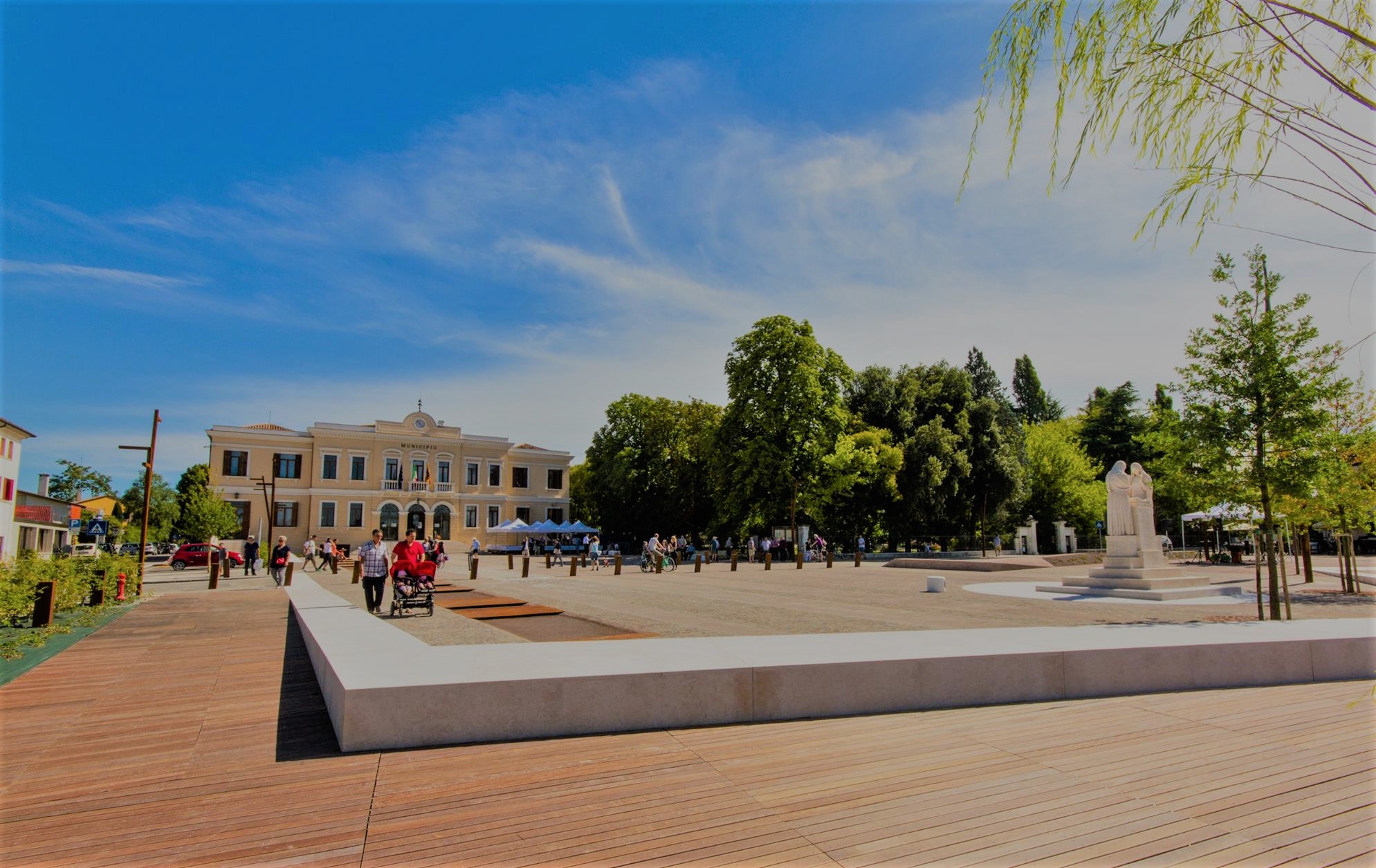Il Borgo
 Monumenti
Monumenti
Descrizione
La piazza del paese, cuore del borgo, si affaccia direttamente sul fiume Sile e si colloca al centro di uno degli antichi colmelli di Quinto di Treviso. Il Borgo è interamente attraversato dal corso d’acqua che divide l’area antistante il Municipio, oggi valorizzata grazie all’importante intervento di riqualificazione urbanistica di Piazza Roma, da quella al di là del Sile.
Nel borgo sono raggruppate interessanti attrazioni del territorio: fra queste Villa Memo Giordani Valeri, con il suo parco di alberi secolari e Villa Ciardi, situata lungo la via omonima. Di grande pregio è inoltre il “Monumento ai caduti” inaugurato il 6 settembre 1925, opera dello scultore triestino Attilio Selva (1888-1970). L’originalità della raffigurazione sta nella scelta di prediligere la “pietas” alla celebrazione altisonante dell’Eroe: la madre e la sposa sono raccolte in intima preghiera sull’ara romana, dove arde il Sacro Fuoco della Patria. L’imponente scultura fu realizzata in prezioso travertino grazie anche al contributo dei cittadini e riporta incisi i nomi di 92 quintini caduti per la Patria, tra i quali il celebre aviatore Francesco Baracca.
Seguendo il percorso fatto di passerelle che si inseriscono armoniosamente nel paesaggio e si snodano lungo il fiume, è possibile scoprire gli habitat tipici del Sile: la palude, il canneto, l'alneta, i boschi di ontani abitati da folaghe, morette, tuffetti, germani reali, cigni, aironi cinerini e garzette. Percorrendo la passerella che congiunge il borgo a Piazzale Indipendenza si trova la singolare scultura contemporanea delle “Anguane” (2014), figure femminili che secondo la tradizione vivono e danzano lungo i fiumi a protezione ed aiuto dei propri cari. Le vesti delle sculture sono rese in forma plastica tramite l'utilizzo di calcestruzzo bianco colorato in pasta, mentre le parti anatomiche sono in lastre di acciaio corten. L’opera è dell’artista di origini quintine Luciano Longo, che ha voluto omaggiare “il suo Sile” richiamando le divinità femminili, che nella tradizione antica sono ninfe e nella tradizione popolare Anguane.
The square, in the heart of the town, stands on the bank of the River Sile and in the middle of one of the ancient quarters of Quinto di Treviso. The river runs through the whole of the old town, dividing the area in front of the Town Hall which, thanks to the extensive redevelopment work to Piazza Roma, has now taken on a new lease of life, and the area on the other side of the Sile.
The old town has a number of interesting attractions, including Villa Memo Giordani Valeri, with its grounds with ancient trees and Villa Ciardi, which lies along the road of the same name. Not to be missed is the war memorial by the Trieste sculptor Attilio Selva (1888-1970), which was inaugurated on 6 September 1925. What makes this work of art so original is the decision to focus on compassion rather than the pompous celebration of the Hero: a mother and bride are immortalised in private prayer on an altar where the eternal flame burns. This imposing sculpture is in Travertine thanks, in part, to the contribution of the townspeople, and the 92 names of the Quinto soldiers who gave their lives for their country are engraved upon it, including the famous pilot Francesco Baracca.
Following the walkways that blend in perfectly with the surroundings and wind along the riverside, visitors can observe the typical habitats of the Sile: the marsh, rushes and the woods of alder trees inhabited by coots, tufted ducks, dabchicks, mallards, swans, grey herons and egrets. Along the walkway linking the town with Piazzale Indipendenza is an unusual contemporary sculpture entitled “Anguane” (2014), portraying female figures who, according to local tradition, live and dance along the rivers to protect and help their loved ones. Their garments are made of white full-body concrete, while their bodies are in corten steel. The sculpture is by local Quinto artist Luciano Longo who wanted to pay tribute to “his Sile” with these female divinities who are nymphs in ancient tradition and Anguane in popular tradition.

